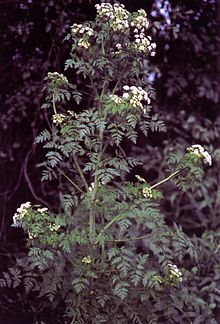 |
| Very edible, and very protected cactus paddles/nopales and prickly pear fruit |
One of the reactions I come across the most when teaching people how to forage is astonishment that a certain food is edible. “That certainly doesn’t look edible!” This holds true for things like thorny thistles, glochid covered cactus paddles, and stinging nettles, among many other things. How can something that looks and seems so inedible actually be used as food?
Surprisingly enough, usually those very plants that you’d steer clear from to protect yourself, are the same plants that, not only are edible, but are also usually the most nutritious type of plant.
The reason this is, though, is very useful knowledge, and can help you figure out what types of foods are likely to be edible, especially if you’re in a survival type of situation where you need to find some type of food to eat, and you don’t have a guidebook to help you.
Protective Adaptation
When someone scary or dangerous looking starts threatening you, how do you react? Do you get up, ready to fight them off? Or are you more likely to remove yourself from the situation somehow, either running away or hiding from them? Call the police?
This is an instinctual reaction that all people have, called the fight or flight instinct. Its a survival adaptation humans have to ensure continuity. Without it, we’d quickly be “dead meat”.
Its not just humans who have this fight or flight instinct. All mammals have it, as well as all members of the animal kingdom, and insects and other creepy crawlies. We need it to survive. Self preservation is the name of the game.
Plants, however, are unable to uproot themselves to flee in the face of a predator. In order to protect themselves and prevent them from being destroyed completely and having their species die out, plants have their own adaptive techniques that ensure their survival. Whether you believe in a creator with a master plan, or are a believer in evolution and the survival of the fittest model, the qualities that plants have to be able to protect themselves is quite awe inspiring. (Some members of the insect or animal kingdom have these qualities as well.)
Protective qualities of plants include:
- Thorns and Glochids (teeny, tiny, near invisible thorns). Examples of such plants are thistles, such as milk thistle and bull thistle, and cactuses, such as prickly pear cactuses and barrel cactuses.
- Stinging and Causing Skin Rashes. Examples of such plants include stinging nettle, poison ivy, poison oak, and poison sumac.
- Well Protected Seeds. This includes all nuts, such as pine nuts, hazelnuts, almonds, etc… that are encased in hard shells.
- Poisonous Plants. This includes poison hemlock and spurge.
- Sometimes Poisonous. While some parts of these plants are edible, or at some stages the plants are edible, or after certain types of specific preparation the plans are edible, the rest of the time, and the rest of the plant is poisonous.
- Looks like Poisonous Plants. This includes most members of the carrot family, most of whom look very similar to deadly poison hemlock, and chickweed, which looks like spurge.
- Fast Multipliers. Plants that reproduce at such a high rate, so that even if a bunch get destroyed, they won’t die out. (This isn’t completely a protective quality on its own- it often is found in conjunction with other protective qualities.)
Why Two, When One Works Well Enough?
Generally speaking, and this is a very vague “generally”, and has very many exceptions, when a plant has one very good means of protection, it has less of a need to have other means of protection.
This would explain very well how nettles, despite stinging people and animals, and giving rashes to any person or animal that touches it, are not only not poisonous, but very edible and one of the most nutritious plants out there. Because the plant “knows” that it is safe from predators by means of its stingers, it doesn’t find the “need” to make itself poisonous and toxic upon consumption as well.
The same would apply to the various thistles and cactuses, all whom are very well protected from predators because of their thorns and glochids, and hence have no need to develop poisons.
 |
| Deadly poison hemlock |
 |
| Deadly oleander |
Compare that, on the other hand, to two of the most poisonous plants there are out there, poison hemlock and oleander. Neither plant is very well protected. Their seeds have no hard shells protecting them. Their stems and leaves are not very well protected. They don’t sting or have thorns.
In order for the plant to protect itself, instead, it creates very powerful toxins that kill people or animals that ingest it, to keep itself safe from predators.
Important Rules
While there certainly are exceptions to this rule, such as the toxicodendron family (poison ivy, poison oak, and poison sumac), which both gives rashes upon contact, and is poisonous to eat, in general this rule is a good one to keep in mind:
“Plants need to be able to protect themselves, but don’t usually need more ways than one. If they have one very obvious means of protection, its typically a somewhat safe bet that they won’t need another, such as toxicity.”
Before I go on, let me remind you of another very important rule when it comes to foraging-
“Do not ever eat a plant unless you are 100% sure is edible, either because you can 100% identify the plant, or you can 100% identify the family and know that there are no poisonous members of the family.”
That said, as much as there are rules, there are times when rules are allowed to be broken, such as if keeping the rules would make you worse off than if you didn’t.
In a survival situation, if you had nothing to eat and you were in danger of starving, and you didn’t recognize any of the specific plants near you, and you had to pick one or two plants to eat, otherwise you may die of starvation, I’d suggest that you first go with a more protected plant, a thorn or glochid covered plant, or a stinging plant, because that type is least likely to be poisonous, and is hence, your safest bet.
Plants seriously are amazing.
This blog post you just read is nothing I’ve ever read anywhere, its just something I’ve put together based on my own observation and my own understanding of the world and science, etc… Its not 100% foolproof, its just my basic idea, which obviously has exceptions…
I actually am looking for as many exceptions as possible. If you know of any plants that disprove my theory, please, give examples. I know there are some poisonous nuts, for example, such as the buckeye…
On the other hand, if you’ve heard or read about this theory elsewhere beforehand, please share with me where you learned/heard it. Thanks a bunch!



